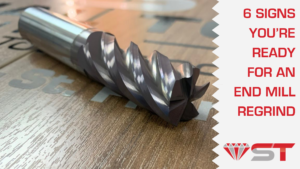You’ve made it to the end of your production run, and now it’s time to remove your cutting tools for inspection. You might see some slight deterioration on the end mill or a few chips and cavities along the cutting edge, but does it really need to be resharpened already?
Determining how long to use an end mill can, at times, be a rather difficult task. To help, we’ve put together the following wear guide to help you judge when to pull a tool and send it to Special Tools for regrinding.
WHY REGRIND YOUR CUTTING TOOLS?
There are several reasons to regrind your end mills rather than simply replace them. These include:
- It costs a fraction of the price: A new end mill can cost hundreds of dollars, depending on the size and geometry. The average resharpening service is $20–$60, saving you hundreds of dollars over the life of the tool.
- It reduces waste: The average carbide, HSS, or cobalt cutting tool can be resharpened 5–10 times, so there’s no need to throw them away after only one use.
- You’re not sacrificing quality: With today’s precision, high-tolerance CNC tool grinders, there are some cases where resharpened tools have even outperformed new ones.
6 SIGNS YOUR END MILL NEEDS REGRINDING
- You notice visible damage on the top/end cutting edges.
- There are chips or gouges along the outside diameter (O.D.).
- There’s a significant slowdown in machining speed.
- Excess heat is being generated during use.
- Increased vibration is causing noise levels to go up.
- Lower quality parts are being produced, possibly with heavy burrs.
THE 3 LEVELS OF END MILL WEAR
When it comes to wear and tear, not all damage is created equal. In fact, the operational lifespan of your tool will depend on how long it gets used past the point of when it should have been sharpened.
So, when is that point, exactly? The answer, of course, will depend on the quality of the tool, its usage, and the surface finish required for your project. With that said, you can use the following benchmarks to help make that crucial determination.
-
LIGHT WEAR
With only slight wear, your tool still has plenty of life left and typically will not require regrinding. However, you can choose to have it sharpened if a desired surface finish is needed on your project. Fortunately, a very minimal amount of material will need to be removed to achieve a “good as new” condition.
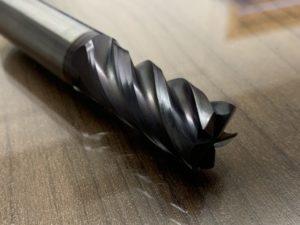
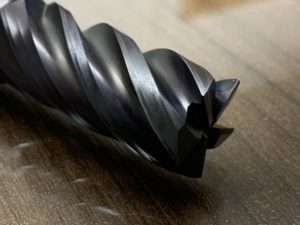
Typical Regrind Loss:
- Diameter: 0.010” – 0.014”
- End: 0.020”
-
MEDIUM WEAR
At this stage of wear, the tool has used up most of its cutting life and is at the most common time for regrinding. The tool can still be resharpened without excessive loss of size, as the flutes remain fully intact, and the edge has sustained only light to medium wear.
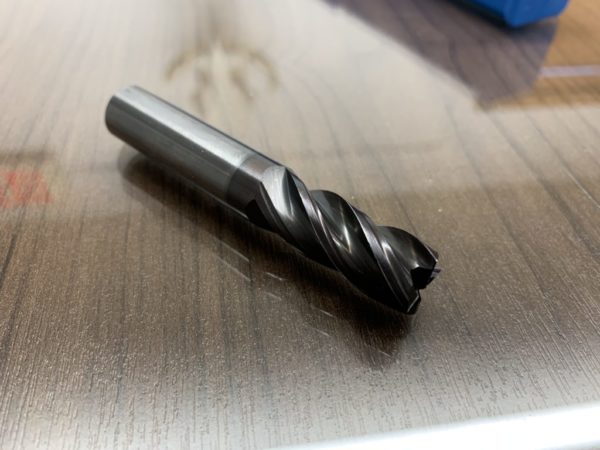
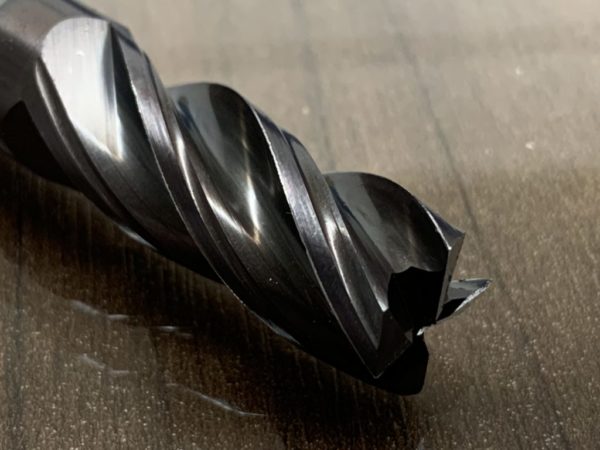
Typical Regrind Loss:
- Diameter: 0.012” – 0.020”
- End: 0.020” – 0.040″
-
EXTREME WEAR
If your tool shows signs of excessive wear (significant chipping, carbide breakdown, etc.), it means it has been used well past its intended lifespan. At this point, the tool is no longer a candidate for regrinding, as that can be more costly and cause excessive size and length of cut loss in the end.
Either a large amount of material will need to be taken off through a reconditioning process, or the tool will need to be returned because it is beyond repair. If you do choose the reconditioning route, don’t be surprised if it ends up costing nearly as much as a one-for-one replacement.
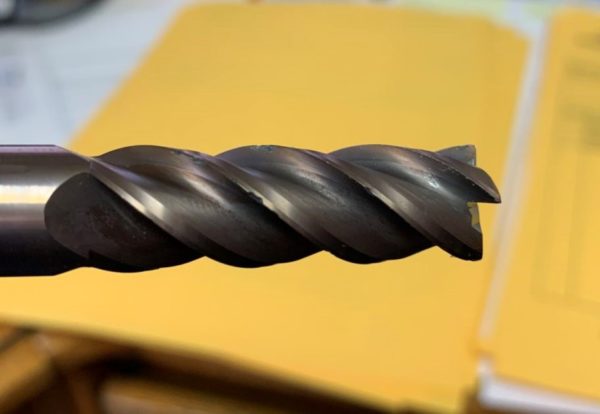
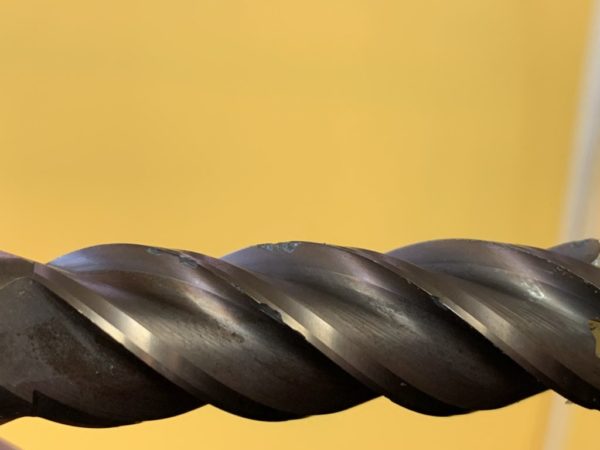
Typical Regrind Loss:
- Diameter: 0.020” – 0.050”
- End: 0.050+” (Some may require cutting off a large portion of the end mill before sharpening, which will shorten its length of cut (LOC))
ARE RESHARPENED END MILLS WORTH USING?
If you don’t believe resharpened end mills can match the performance of a new tool, then you obviously haven’t tested ours. Our team of experienced professionals will help keep your tools precisely tuned and highly accurate.
Our in-house inspection team can verify rake angles, flute depth, variable helixes, and other stringent specifications to ensure peak OEM performance. Click here to get a free resharpening estimate or give us a call at 763-753-6515.


